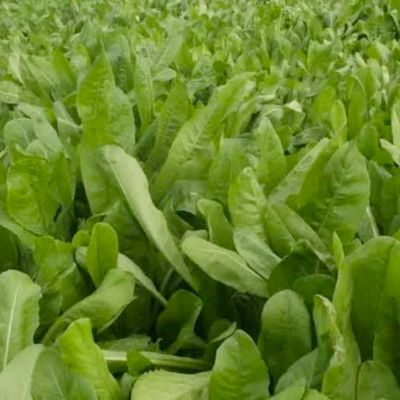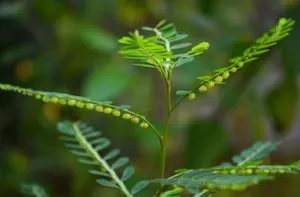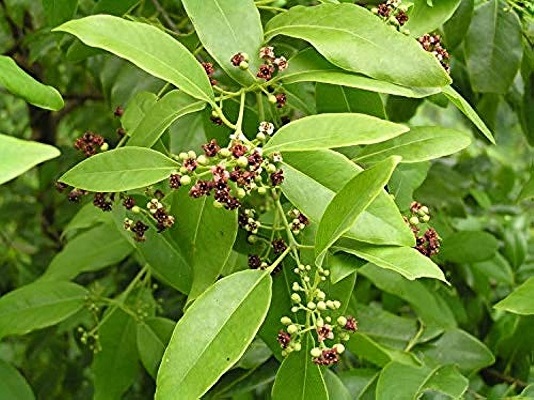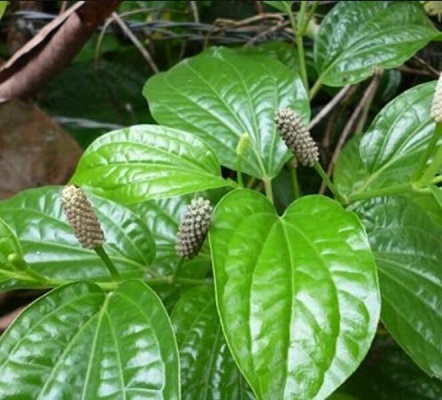On This Page
Bhumi Amla (Phyllanthus Niruri) – Benefits, Uses, and Dosage
Introduction
Bhumi Amla or Bhumi Amalaki is scientifically known as Phyllanthus niruri is a tropical herb that grows up to the height of 70 centimeters. The presence of Amla (Indian gooseberry) like fruits under the leaves is the main feature of this herb. The herb got its name – Bhumi Amla – because, compared to other Amla (Indian gooseberry), this herb is close to the Earth or Bhumi.
Dr. Gupta’s Ayurvedic research unveiled various actions of this herb. Our specialists have attained splendid results in allergic disorders by using this herb as the main ingredient. This herb is one among the multipotent Ayurvedic medicine which is having great actions like anti-allergic, anti-fungal, anti-viral, febrifugal, anti-viral, anodyne, astringent, appetizer, lithotriptic, and laxative. The extract of this medicine is used in managing Hepatitis and HIV cases.
Importance of Bhumi Amla in Allergies
Phyllanthus niruri has extensive anti-allergic properties and has a clinically proven history in pharmacological immunomodulatory action. Arabinogalactan (AG, a biopolymer obtained from Bhumi Amla aqueous herbal preparations is found to have immunological properties.
Ayurvedic researches and evidence prove the Kapha and Pitta balancing quality of Bhumi Amla. It is beneficial in the conditions of allergies, cough, bronchitis, asthma, and conjunctivitis. In combination with other herbs, it is also used for skin diseases like scabies and ringworms. Phyllanthus niruri due to its multiple pharmacological actions is the prime drug of choice in our different types of anti-allergic preparations.
Vernacular Names
| Common Name | Phyllanthus, Stonebreaker |
| Sanskrit Name | Bahupatra, Tamalaki |
| Hindi Name | Bhumi Amla, Bhoomi Amla, Jangli Amla |
| Urdu Name | Bhumi Amala |
| Spanish Name | Chanca Piedra |
| Gujrati Name | Bhanya Amli |
| Delhi Name | Dhadhan, Monk |
| Telugu Name | Nela Usirikaya |
| Tamil Name | Keelanelli |
| Kannada Name | Bhu Nelli, Nelli Nelli |
| Marathi Name | Bhui Avla, Bhui Amla |
Botanical Name
Phyllanthus Niruri
Family
Malpighiales – Phyllanthaceae
Phytomorphology of Bhumi Amla (Phyllanthus Niruri)
Phyllanthus niruri is commonly known as “Chanca piedra” is an annual weed, growing up to 2 -3 feet height and having ascending hairless branching with small leaves at the base. The leaves are decorated with flowers and fruits.
Bhumi Amla is identified by the small green elliptical-shaped leaves having no stalk that is growing from the stem. The leaves are arranged alternatively and closely on either side of the stem having two short petioles and stipules. The small, unisexual, monoecious flowers of yellow color often added with red tone are present on Phyllanthis niruri. Male flowers are having 1 to 3 sessile stamens and female flowers are having solitary nature. Fruit is in the form of smooth and tiny capsules of 2 to 3 millimeters in diameter. The stem is moderately hard. The whole plant can be taken for attaining juice for treatment purposes.
Ayurvedic Reference of Bhumi Amla (Phyllanthus niruri)

Plant occurs throughout as a common weed almost in all parts of country, generally on flat land and along road sides, also near water course.
The plant contains alkaloid punarnavine, punarnavoside, beta sitosterol, tetracosanoic acid, hexacosanoic acid, stearic acid, hentriacontane, ursolic acid, mysristic acid, oxalic acid, potassium nitrate etc.
Parts Used of Bhumi Amla (Phyllanthus Niruri)
Bhumi Amla whole Plant is used as internal medication for oral intake generally. Its paste is also applied to various skin ailments.
- Stems
- Leaves
- Fruits
- Flowers
- Roots
Dosage of Bhumi Amla (Phyllanthus Niruri)
- Powder (Choornam) – 3-6 gm Per Day.
- Juices (Swaras) – 20-30ml Two Times a Day.
Medicinal Properties and Uses of Bhumi Amla (Phyllanthus Niruri)
- Rochak – Improves taste and appetite hence useful in anorexia and indicated in Pandu (anemia)
- Pittashamak – Recommended in bleeding disorders with increased Pitta dosha level, such as nasal bleeding (Raktapitta) and menorrhagia (heavy and prolonged menstrual bleeding)
- Kaphaja Kushta – Useful skin diseases
- Vishaghan – Cures toxic conditions like food and drug poisoning
- Shwasahari – Used in treating chronic respiratory disorders like asthma
- Trishna shamana – Used in excessive thirst and dry mouth
- Dahahar – Cures Pitta dosha predominant allergies causing symptoms like burning sensation and gastritis
- Hidhma shamaka – Relieves from hiccough
- Kasa hara – Cures common cold and cough
- Pittamehahara – Used in treating diabetes predominant with Pitta dosha vitiation
- Mutrarogahara – Used in urinary tract disorders

Have A Health Issue?
Consult Online
- Dr. Sahil Gupta (B.A.M.S., M.H.A.)
Ayurvedic Allergy Specialist
CEO & Founder of IAFA®
Home Remedies of Bhumi Amla (Phyllanthus Niruri)
Phyllanthus niruri is used in Ayurveda from ancient times (more than 2000 years) as a medicine.
- Bhumi Amla in Food Allergies: Fresh cold press juice (Swaras) 5 to 10 ml of leaves is given to the children below 7 early in the morning to treat food intolerance.
- Bhumi Amla in Fever: Herbal tea preparation of Bhumi Amla leaves is useful in enteric fever relapse.
- Bhumi Amla in Eye Allergies: Fine crushed paste of this plant centrifuged and applied over the eyelids to treat conjunctivitis and blepharitis.
- Bhumi Amla in Nasal Allergies: Fresh juice of the whole plant is recommended as a nasal drop to cure nasal allergies and infections.
- Bhumi Amla in Skin Allergies: Fine paste of Bhumi Amla leaves is applied over the affected part of the skin in case of infections and allergies. Leaf decoction (60 ml dose per day) is widely used as a blood purifier to treat skin diseases.
Dr. Gupta’s IAFA is a splendid destination for Ayurveda followers. The institute is conducting various researches with all possible herbs mentioned in Ayurveda classics to make it available to all our followers in easily available form. Dr. Gupta’s experience and skill along with the usage of original Ayurvedic medications assure a complete nature cure for a wide range of ailments.
IAFA is simply a real Ayurveda follower!!!
Was this Page Helpful?
Read More Articles
-

Kasini (Cichorium intybus)
Know about the uses, benefits, and medicinal properties of Chicory, Kasini (Cichorium…
-
-









